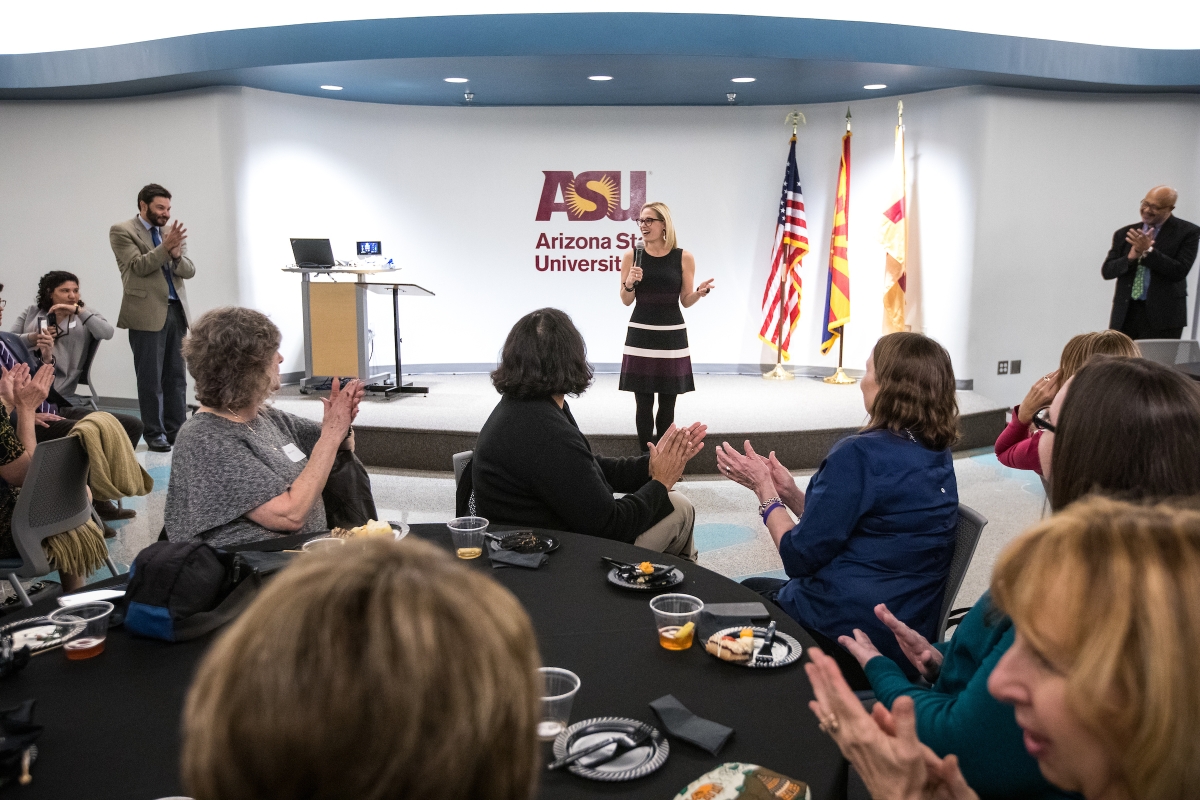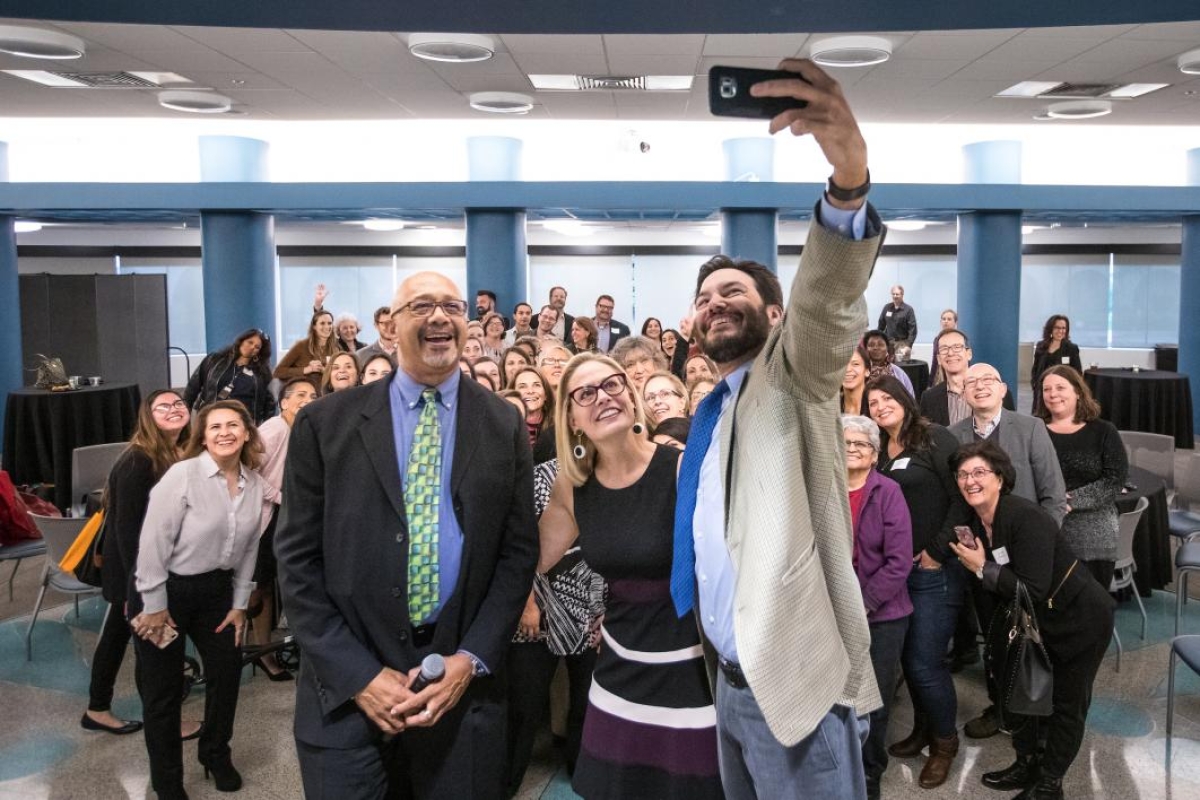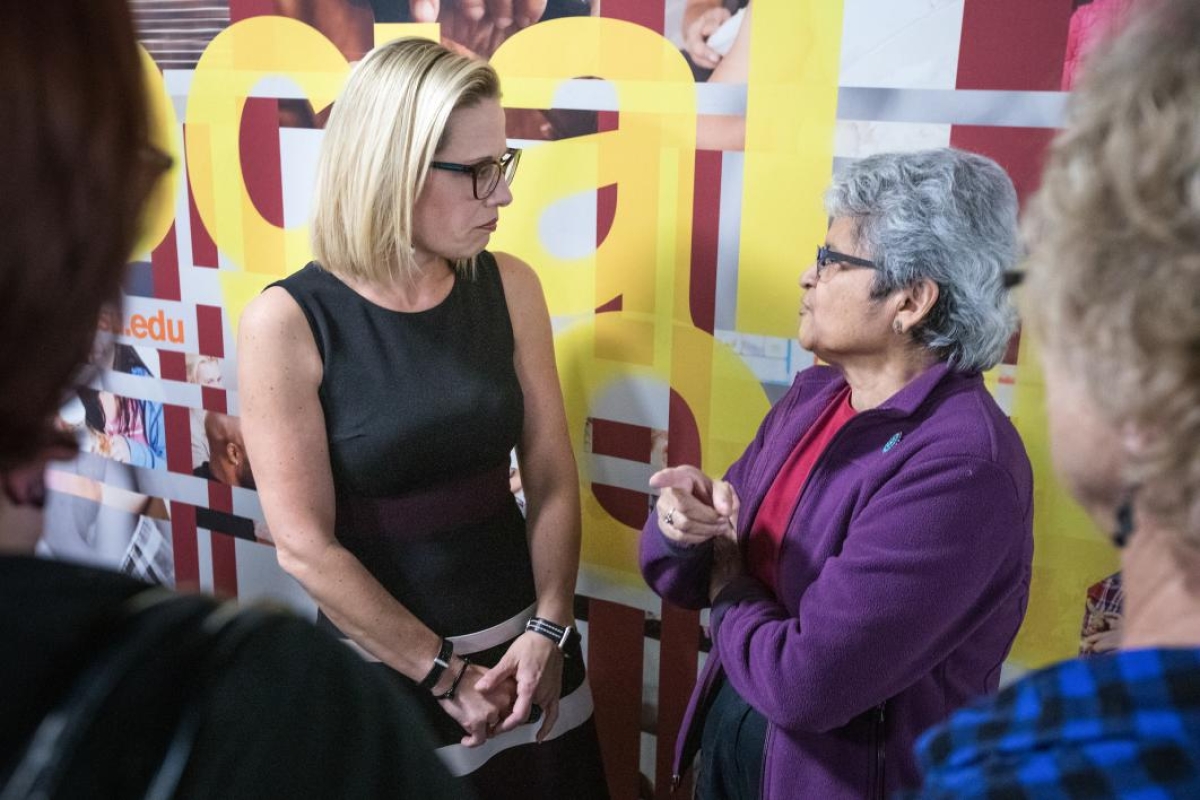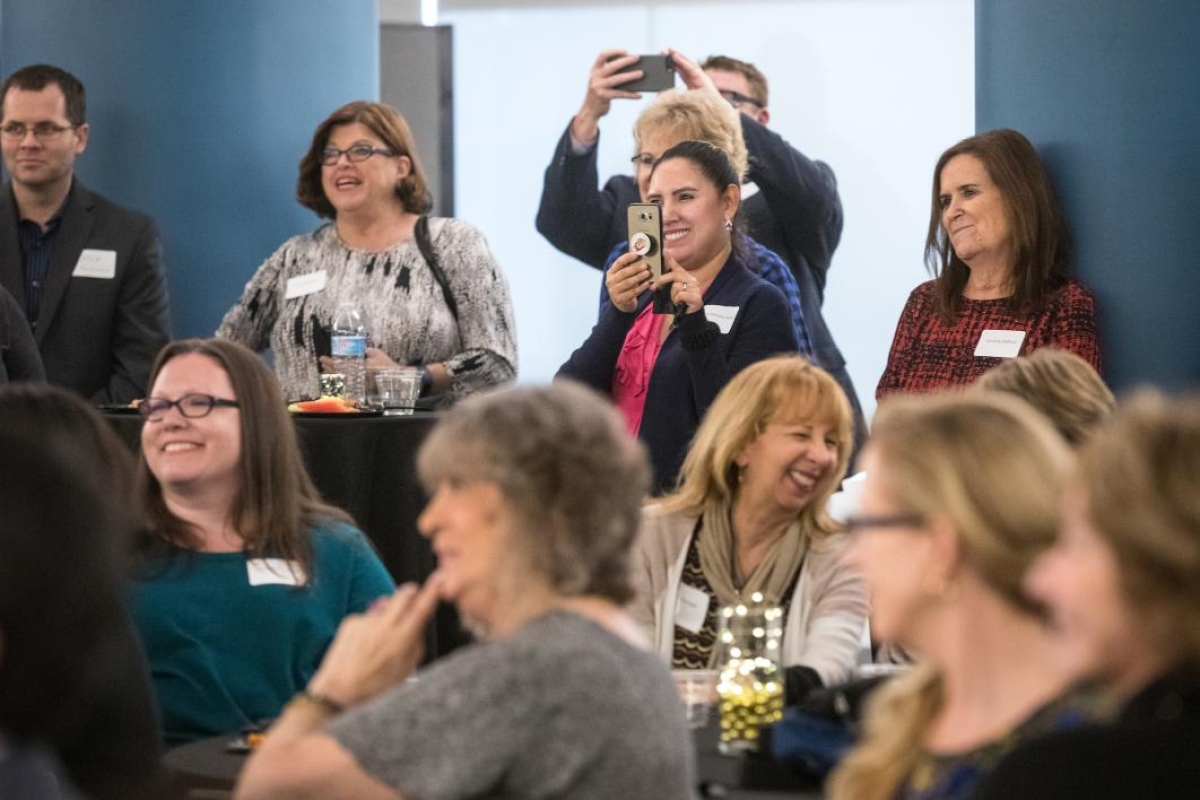Arizona’s next US senator guided by social work
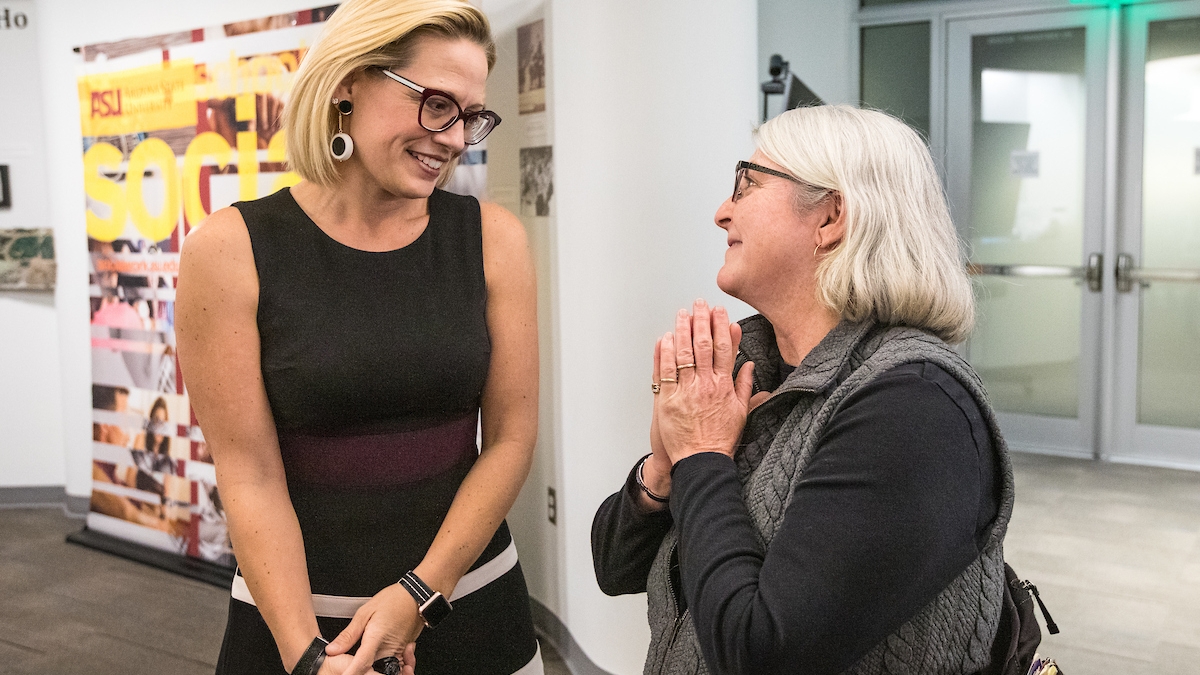
Senator-elect Kyrsten Sinema talks with one of her former professors, Elizabeth Segal, at a reception honoring current adjunct faculty member Sinema, in the Concho Room at the Westward Ho in downtown Phoenix, Monday, Dec. 3.
Arizona’s next U.S. senator Kyrsten Sinema began her workweek by finishing her semester as a lecturer in the School of Social Work at Arizona State University. She submitted her grades for the two classes she teaches, an undergraduate online course titled “Legal Issues in Social Work” and a graduate seminar she taught once a month on weekends titled “Development Grants and Fundraising.”
“As I submitted them I thought to myself ‘I'm so lucky, not only am I preparing to head into the United States Senate to serve our great state as the first woman senator in our state, and as the first social worker, but I'm equally proud of the fact that, as of this morning, I've finished my 16th continuous year of teaching in the School of Social Work at ASU,’” Sinema told an audience at a School of Social Work reception held at the Westward Ho Concho room in downtown Phoenix Monday evening.
Sinema told invited students, alumni, faculty and staff about her journey into politics. As a social worker in the Sunnyslope community of Phoenix, she saw the community needs going unmet.
“I would go to bed each night thinking to myself, 'This was not enough, I need to do more,'" Sinema recalled. “'The change I need to make in my community was greater than what I was able to do today.'"
Sinema enrolled in the School of Social Work and earned her graduate degree in 1999. She was asked to start teaching a few years later. Paola Villa was a student in Sinema’s fall 2018 graduate class.
“She was outstanding, probably one of the best professors I have ever had,” Villa said. “She had everything very strategically planned and knew what to do. She had deadlines but was always available regardless of being in D.C. She replied to emails, like, day of.”
Villa had her photo taken with Sinema at the event. She's still in awe that Sinema served in Congress, ran for election and taught two classes during the fall.
“Everyone in the class is shocked about how much she does it and we're constantly asking her, ‘How do you do it?’” Villa said.
Sinema's answer? Making sure she took care of herself and setting priorities.
For Watts College of Public Service and Community Solutions Dean Jonathan Koppell, Sinema is an example of what public service can be.
“I am enormously proud, not just that you won ... but how you conducted yourself in the campaign,” said Koppell, a political scientist by training. “It showed how politics can be and I would humbly guess that some of your social work training and experience was relevant.”
Sinema explained how her social work ethos guides her interactions with others, including opposing candidates.
“I pledged early on in my career and I doubled down on that pledge in this race for the United States Senate that I would campaign the same way that I govern, the same way that I teach and the way that I try to live my life — which is to seek understanding of those around me rather than to move forward with a combative attitude,” Sinema said.
For Arizona’s Senator-elect, that means trying to understand where people are coming from and having empathy for other perspectives. She said she wants to learn why people have particular points of view or perceptions, even if they are different from her own.
“I promised myself and instituted this throughout my entire campaign — all 700 or so people who were working for us by the end of that campaign — that we would behave in the highest ethical manner every single day, regardless of what happens in the rough and tumble of American politics today,” Sinema said. “That we would stand up every single day and we would continue to behave according to the ethics of our profession that we would not engage in that low name-calling or the ugliness and the pettiness of personal attacks.”
With about 100 social workers in attendance, Sinema used the opportunity to get recommendations for new staffers. Since her election to the United States House of Representatives in 2012, Sinema has exclusively hired social workers with graduate degrees or MSWMaster of Social Works to serve in her casework office. She plans to hire more as she now represents the entire state.
“I need more MSWs, so please send me your best and brightest, hardest working MSWs,” Sinema said. “I expect that the number of calls we'll receive in our office come Jan. 3 will skyrocket and that is exactly what I hope. I want folks all around the state to wake up and think to themselves, ‘I got a problem with the federal government, something's not getting done. I can call my senator and she and her team of social workers will help solve these problems.’"
James Herbert Williams, director of the ASU School of Social Work, couldn’t help but smile when he heard Sinema say she wants to hire social workers with graduate degrees to solve problems.
"I couldn't see a better role model for students, especially women,” Williams said. “It shows what you can accomplish in life, and the importance of an MSW degree.”
In addition to earning her master's degree in social work from Arizona State University, Sinema earned a law degree from the Sandra Day O'Connor College of Law, a PhD in justice studies from the College of Liberal Arts and Sciences and an MBA from the W.P. Carey School.


